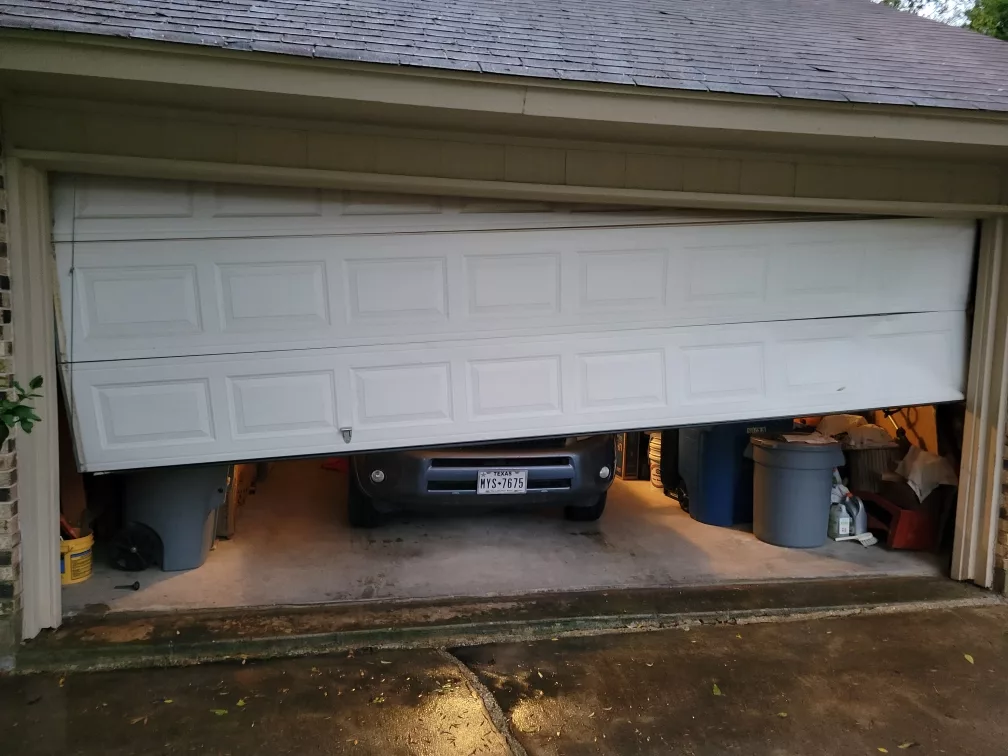Thorough Garage Door Service to Prevent Future Breakdowns
Thorough Garage Door Service to Prevent Future Breakdowns
Blog Article
Usual Garage Door Problems and How to Repair Them
Garage doors are necessary for both protection and comfort, yet they commonly provide a variety of common concerns that can irritate property owners. While some problems may show up simple to deal with, others might need a more nuanced understanding of garage door mechanics.
Noisy Garage Door Procedure
A noisy garage door procedure can be a substantial source of annoyance for home owners, usually showing underlying mechanical problems. Such disruptions might come from numerous causes, consisting of worn-out rollers, loosened hardware, or insufficient lubrication. Recognizing the source of the sound is essential for reliable resolution.
One typical root cause of extreme sound is the existence of rusty or worn-out rollers. Over time, these elements can deteriorate, causing grinding or squealing audios as the door moves. Normal evaluation and substitute of these rollers can substantially lower sound levels. Furthermore, loosened bolts or screws in the door system can develop rattling noises throughout operation. Tightening these bolts ensures a much more secure and quieter movement.
Another contributing aspect is poor lubrication of the door's moving parts. Applying a high-quality lubricant to the tracks, springs, and rollers can significantly reduce rubbing and sound. Property owners need to execute this upkeep periodically to preserve ideal efficiency.
Last but not least, the garage door opener might also generate noise because of its age or mechanical concerns. If the sound lingers regardless of attending to other factors, getting in touch with a specialist for an extensive examination and potential repair may be necessary.
Door Won't Open Up or Close
Experiencing a garage door that will not open up or shut can be exceptionally irritating and usually signifies a breakdown within the system. A number of aspects can contribute to this issue, and identifying the origin is vital for effective resolution.

Following, examine the safety and security sensors situated at the base of the door. These sensors can end up being misaligned or blocked by debris, stopping the door from operating properly. Tidy the sensors with a soft fabric and guarantee they are aligned.
Furthermore, the garage door's inner components must be evaluated. Problems such as a busted spring, worn-out rollers, or a harmed opener can impede motion. If any type of elements show up to be damaged, it may be a good idea to speak with a specialist for repairs.
Misaligned Tracks
(Cost-Effective)Misaligned tracks can significantly disrupt the smooth operation of a garage door, bring about functional failures such as irregular motion or total immobilization. This issue commonly develops as a result of a variety of elements, including wear and tear, unintentional impacts, or inappropriate setup. When the tracks are misaligned, the rollers can stagnate easily, which not just strains the electric motor however also positions safety and security dangers.
If you observe any disparities, it is vital to deal with the concern immediately. Carefully touch the track back into its proper position making use of a rubber mallet or a comparable tool, ensuring it is straight and degree.
Routine upkeep, consisting of cleaning the tracks and making sure rollers are in excellent condition, can avoid future imbalances. By resolving misaligned tracks quickly, you can bring back the capability of your garage door and boost its longevity.
Broken Springs
Among the different parts of a garage door system, broken springs are one of the most typical concerns that can considerably restrain its performance. Garage door springs are crucial for stabilizing the weight of the door, permitting smooth opening and closing. When a spring breaks, it can cause a door that is hard to run or, in some cases, completely inoperable.
There are two main types of springs: torsion springs, which are mounted over the door, and expansion springtimes, located on either side. Indicators of a busted springtime consist of a door that will not open, a visible gap in the spring, or a loud noise throughout procedure. Trying to run a garage door with a damaged spring can cause further damage to the door or the opener.
Fixing busted springtimes is not a DIY project; it requires specialized tools and competence because of the high tension involved. It is advisable to speak with a professional service technician that can securely replace the springs and make certain the door is effectively balanced. Regular upkeep and examinations can assist avoid spring failings and prolong the lifespan of the garage door system.
Remote Issues

If the remote still falls short to run, check the garage door opener to make sure that its sensors are clean and unobstructed. Dirt, particles, or imbalance may hinder the signal transmission between the remote and the opener.
Disturbance from various other electronic devices can also restrain remote capability. Make sure that close-by devices, such as wireless routers or cordless phones, are not creating interruptions. garage door service. If interference is thought, try relocating these gadgets even more away from the garage door opener
In many cases, the remote might need to be reprogrammed. Speak with the manufacturer's standards to reset the remote and integrate it with the garage door opener. If all else stops working and the remote remains to malfunction, take into consideration seeking advice from an expert technician for a thorough examination and prospective substitute of the remote or opener.
Final Thought
(Expert Advice)In recap, common garage door problems can dramatically impact functionality and security. Addressing noisy operation entails lubrication and tightening up hardware, while issues with opening or closing call for assessment of source of power and sensors. Misaligned tracks can be fixed through change, although broken springs necessitate professional treatment. Push-button control breakdowns normally develop from weak batteries or interference, which can be solved through substitute or reprogramming. Proactive upkeep and timely repairs can make sure optimal performance and long life of garage doors.
Report this page